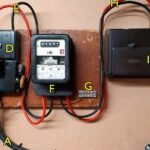The long-awaited construction of the Eastern Green Link 1, a major subsea interconnector between Scotland and England, has officially begun. The £2.5 billion ($3.2 billion) project aims to enhance the UK’s energy infrastructure by transmitting renewable energy, supporting a greener future, and addressing growing energy demand across the country.
Eastern Green Link 1: A Vital Energy Corridor
Eastern Green Link 1, a joint venture between SP Energy Networks and National Grid Electricity Transmission, will provide a direct link between the south-east of Scotland and the north-east of England. Spanning a distance of 190 kilometers, this subsea cable will transport renewable electricity capable of powering 2 million homes.
The interconnector project is essential for integrating renewable energy sources and ensuring that the electricity grid can meet the rising demand for green power. Construction is already underway, with offshore work set to begin in the summer of 2025.

The Impact of the Interconnector on Local Communities
The interconnector will run from Torness in East Lothian, Scotland, to Hawthorn Pit in County Durham, England. At these landfall points, two converter stations will be built to convert the electricity from alternating current (AC) to direct current (DC), facilitating its smooth transportation across the subsea cable.
During the groundbreaking ceremony, Paul McLennan, the Minister for Housing and MSP for East Lothian, emphasized the importance of this project for the region. “As a key energy hub, East Lothian is at the heart of Scotland’s renewable growth,” he said, highlighting the economic and social benefits the project will bring to local communities.
Strengthening the UK’s Energy Security and Economy
The interconnector is a pivotal part of the UK’s broader energy strategy to transition to cleaner, more secure energy sources. Nicola Connelly, CEO of SP Energy Networks, stated that the project would help meet the future electricity demand while stimulating economic growth across the UK.
Energy Minister Michael Shanks echoed this sentiment, saying that the project would support the UK’s ambition to become a “clean energy superpower,” create skilled jobs, and save consumers hundreds of millions of pounds in energy costs.
The Eastern Green Link 1 is part of the UK’s efforts to modernize its energy infrastructure, with the use of advanced subsea technology expected to bring significant long-term benefits for both the energy system and the economy.
Future Prospects for Subsea Energy Infrastructure
The project follows the successful operation of the Western Link, the world’s highest-capacity subsea cable, which has been in service since 2017. Together with the Eastern Green Link, these two interconnectors represent monumental infrastructure projects that will help meet the UK’s future energy demands and accelerate its transition to a low-carbon economy.
With plans to enhance grid connectivity and facilitate the flow of renewable energy, the Eastern Green Link 1 will play a critical role in powering homes and businesses while contributing to the UK’s long-term sustainability goals.


















